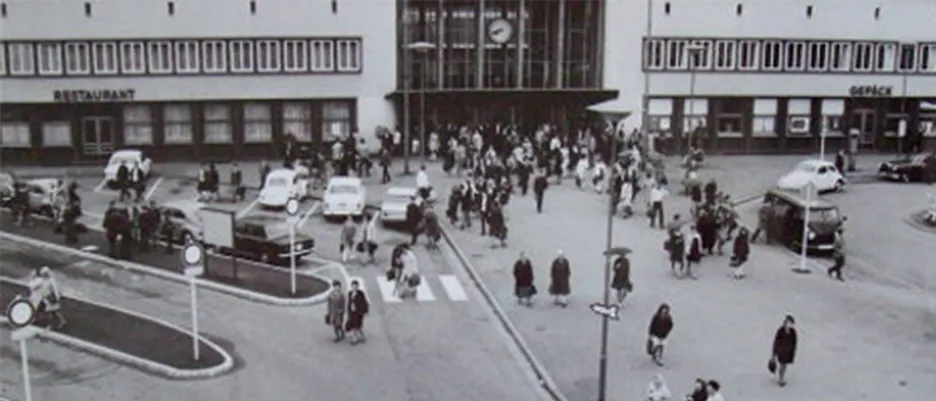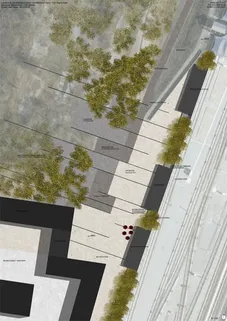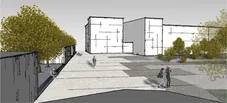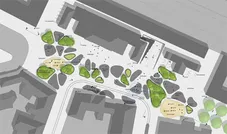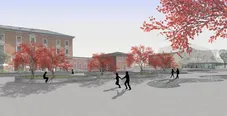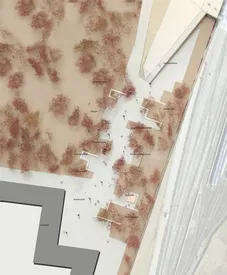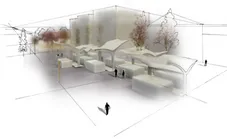Two Squares
Projekt Landschaftsarchitektur LA I, Wintersemester 2009/10
Topic
Squares are often the last truly public spaces in a city, not subject to the commercial goals of privatized passages, shopping malls, and dining areas. Here, people of all social strata and ages, residents and strangers, come together. This is especially true for train stations, which typically serve as hubs connecting various modes of transportation, often also serving as centers for the daily needs of residents and serving as places for brief stops or simply passing through.
In the 19th century, the train station square was the place where travelers arrived in a city, and it received the corresponding attention as the city's 'business card.' However, in the 20th century, it gradually lost this significance due to the emergence of motorized individual transport. Train station squares were seen more as negatively associated places, primarily serving a transport function but not playing a role as public spaces.
Especially in large cities, public transportation increasingly handles the growing mobility of people today. Train stations play a central role in this regard, as they serve as hubs for connecting various modes of transportation and significantly influence the comfort of transportation. This change in importance has led to the creation or redevelopment of train station squares in many places, taking into account the new requirements and demands.
Task
In Munich, new squares are planned to be created at Pasing train station and the subway station in Fröttmaning. These locations, as well as the square programs, differ significantly and require a differentiated approach to the task at hand.
In the Pasing district, the relocation of all through traffic creates new urban connections and possibilities for the area around the train station. These are already indicated by newly emerging buildings and generous public spaces. The station square serves as the central link between the train station, existing and new developments, and adjacent public and transportation areas. The new square design should take these requirements into account.
The subway station in Fröttmaning primarily serves as a transfer point for commuters coming from the north at the P+R facility and as a station for visitors to the Allianz Arena. It also provides access to a residential neighborhood currently under construction to the southwest. A new square is intended to connect the residential area with public transportation and the adjacent Fröttmaninger Heide nature reserve.
The design project explores the extent to which the new squares respond to their respective locations and how different the program and requirements will be. It will be a matter of discussion whether, and to what extent, the new squares should have a strong contrasting image compared to the surroundings or if they should be integrated into the urban context. Working on different sites in Pasing and Fröttmaning illustrates the approach to a complex task that calls for a design concept that goes beyond contemporary furnishings or conspicuous square design and considers the broader urban context.
Supervision
Prof. Regine Keller, Dipl.-Ing. Mattias Roser, Dipl.-Ing. Felix Metzler
